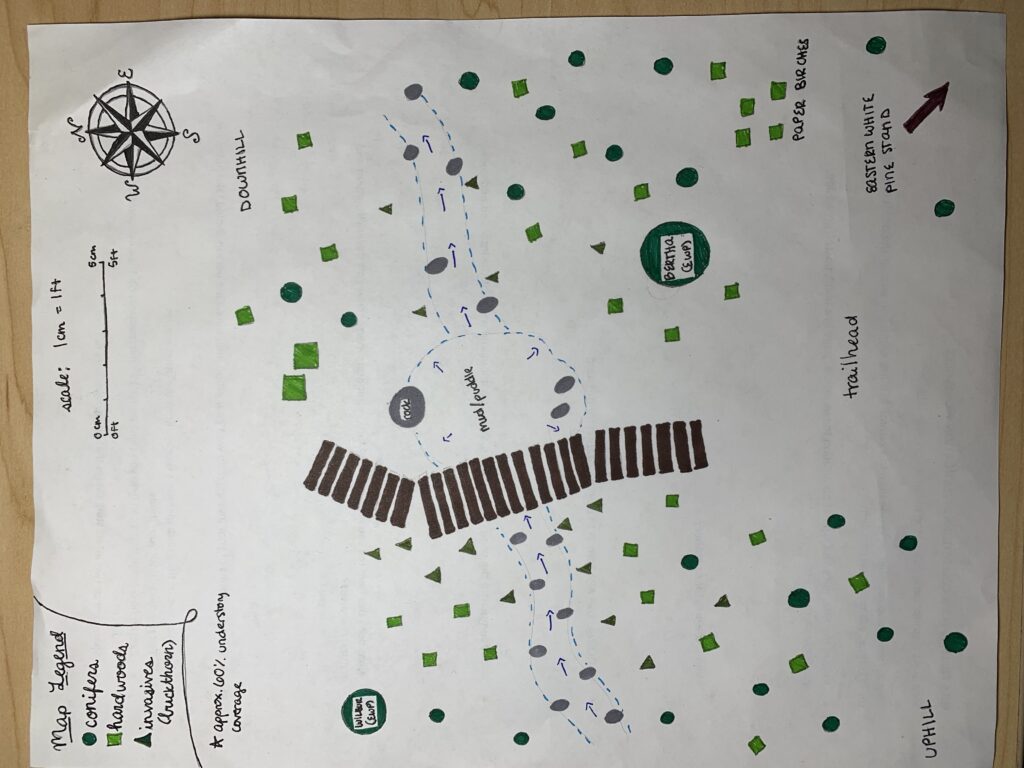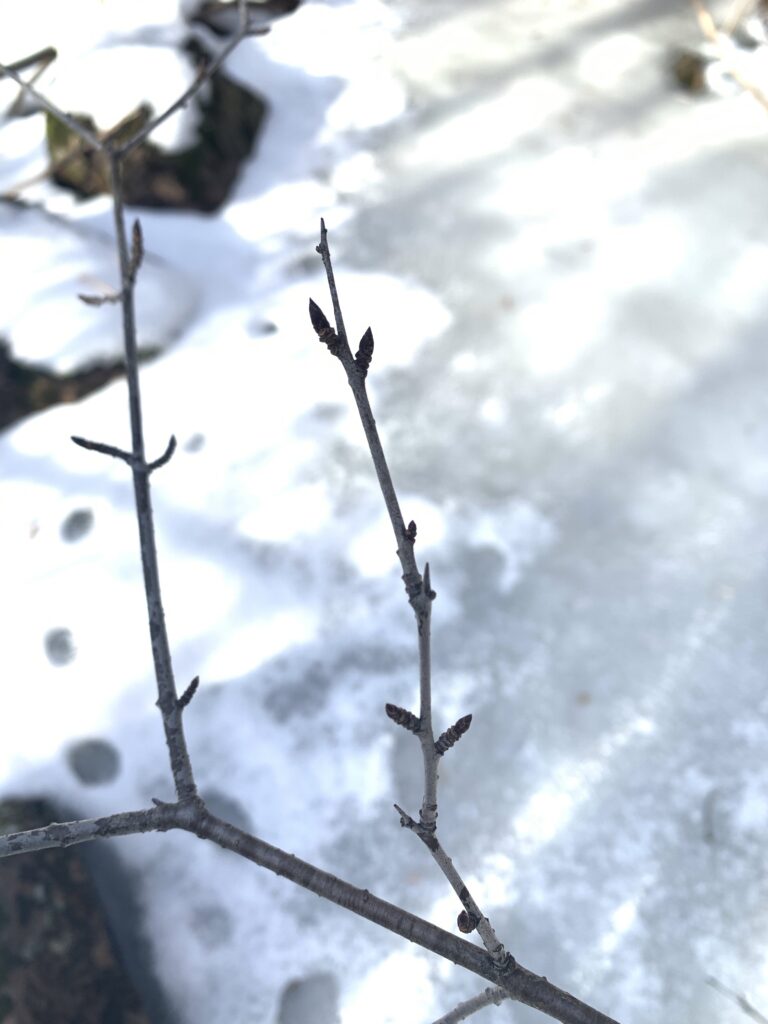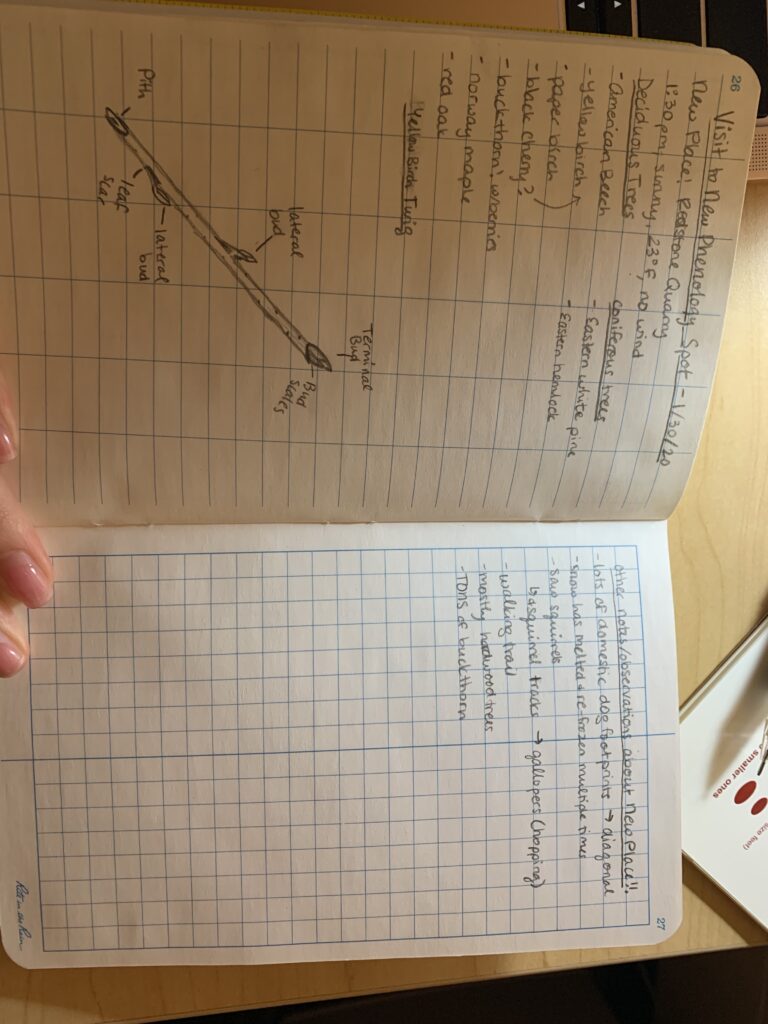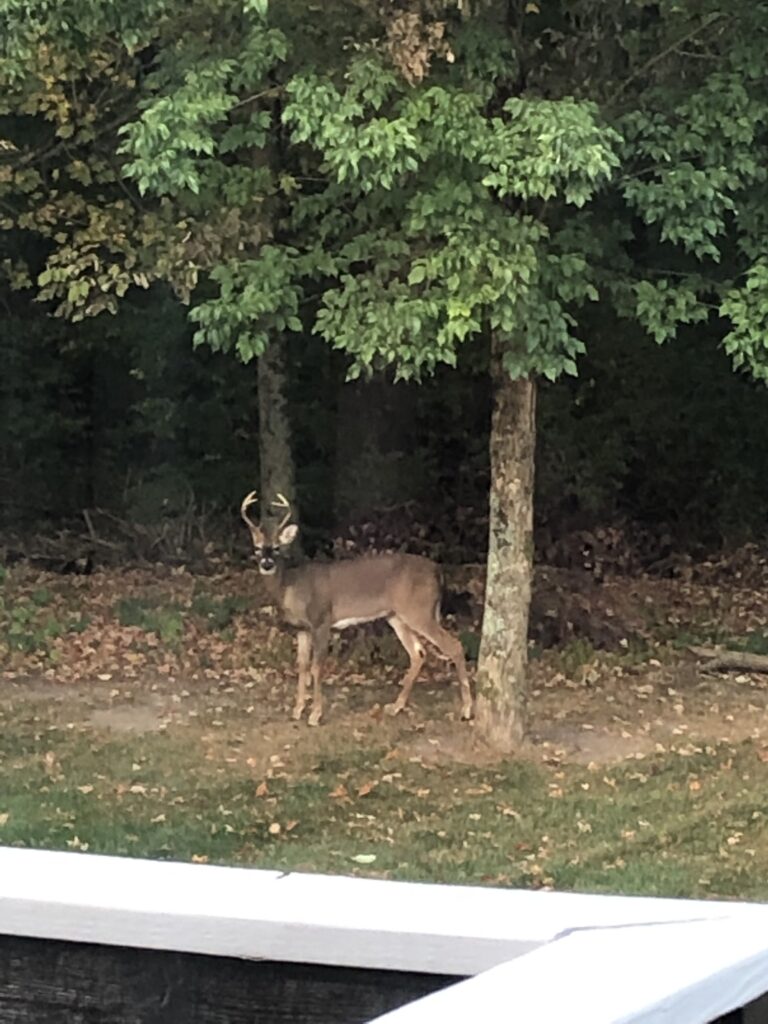
6 dominant species (in no particular order)
- eastern white pine—Pinus strobus
- fern—phylum Pteridophyta
- Common buckthorn—Rhamnus cathartica
- Norway Maple—Acer platanoides
- Arion Slug—Arion fuscus
- American Toad—Anaxyrus americanus
Well, to say everything died is an exaggeration, but a lot of things died. Quite notable is the patch of buckthorn to the left—buckthorn is typically one of the last species to lose its leaves, especially compared to the surrounding hardwood and conifer species. I yet again managed to visit within 48 hours of rain, which is how I happened upon the toad and slugs. This time, it rained significantly more, and I discovered that a very small stream occasionally flows northeast, intersecting the trail. This can be connected to human activity in the area—chances are, the somewhat regular occurrence of that stream is why the wooden bridge was built. This can also explain why the buckthorn is so prevalent, because buckthorn grows best in wet, moist soils.
The mapping exercise made me actually look at which kinds of trees were growing where, and then think through why they were growing in these places. To get down to Miranda’s Place, you take a left at the first Eastern White Pine stand in Centennial Woods. As you continue going down the hill, you start to see a lot more understory coverage—ferns and moss especially—and hardwood species such as Norway maple, birches, and the other trees detailed in my last post. This checks out with the topography of the soil. Generally, soil at the top of a hill (like we saw at Jericho) is more acidic and has less nutrients, since the nutrients get washed down towards the bottom of the hill with rain runoff. Hardwoods require more nutrient-dense, moister soil, so as you go down the hill and get to the bridge, the surrounding forest gradually switches from mostly conifers to more hardwoods. I added the shapes with types of trees to my map when I returned from my visit, because before that I didn’t pay attention to the variation in tree growth.
A note that I made in my field notebook and would like to elaborate on is how much traffic there is. Originally, I sat to observe on the edge of the bridge, but after approximately 30 seconds I had to move to a rock so that hikers could walk by. Aside from the toad (mislabeled in notes as frog—whoopsies), I didn’t observe any animals. I ended up paying attention to how the people looked going into the woods vs. coming out, and they almost always looked less stress and tense on their way out. It was another good reminder for me of how lucky we are to have this oasis amid Burlington’s urbanization.





























